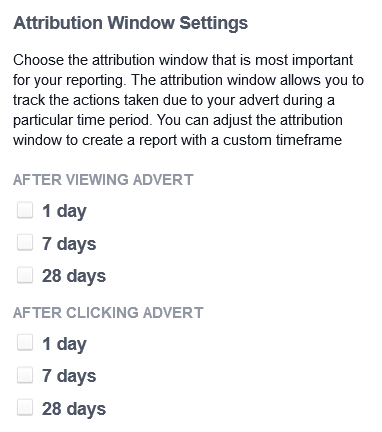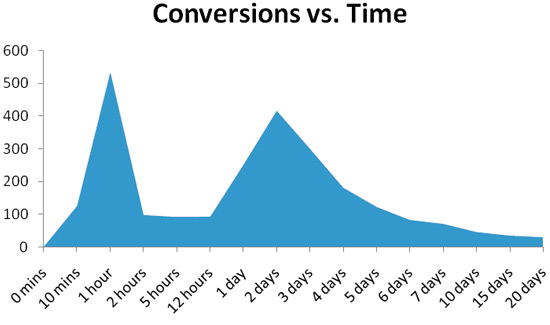You run campaigns on Facebook with the primarily goal of increasing conversions. A conversion could be a prospect opting-in to your newsletter, taking a lead magnet or buying a product.
For Facebook, the Attribution Window is what captures these actions and reveals how successful your campaigns really are based mainly on the variable of which source gets credit for the conversion. An Attribution Window tracks prospects for a certain period of time from the initial point of engagement (viewing or clicking your ad), and will award itself a conversion if a prospect converts anytime during the tracking period.
In this article, I’ll go over how the Facebook Attribution Window works, different types of windows used and how you can find the best window for your business.
Understanding conversion attribution (and it’s problems)
In online marketing, the term conversion attribution (Attribution Window) is the process of giving the source of the conversion the credit. For example, let’s say someone clicks on your Facebook ad that promotes a lead magnet you’re offering. The prospect reads your landing page but decides not to opt-in and leaves your website.
A few weeks later they revisit your website through Google AdWords and end up back on your landing page. This time they take your lead magnet. Depending on the length of the Attribution Window (discussed later), both Facebook and Google AdWords would award their respective ad with the conversion.
But here’s the problem.
According to each platform you have made two conversions, yet you’ve only generated one lead.
If you’re running multiple ads on different platforms which are being served to thousands of prospects, your conversion metrics will be skewered. To avoid this you will need to change the duration of your windows.
Facebook Attribution window types
Facebook’s conversion Attribution Window tracks two types of actions, they are:
- Users who clicked on your ad (click-through)
- Users who viewed your ad (view-through)
*By default in Facebook reports, prospects who view your ad are tracked for 24 hours while anyone who clicked your ad is followed for 28 days.
A person who converts to your ad but never clicked your ad on Facebook, is hereby referred to as a View-Through conversion and Facebook still rewards it-self for the aforementioned for View-Through conversion.
There’s usually very little reason to set the view-through window to anything more 1 day (in most cases). Facebook users scroll through their newsfeed at lighting speeds, and with so much content on their newsfeed, it’s highly unlikely that by viewing your ad for a few seconds made them convert later in the day. Less precedence should be given to conversions recorded as the result of a view-through.
Click-through provides a better metric and reveals a truer story. For instance, when a prospect clicks your ad, they have some sort of intent or interest with your offer.
Facebook allows you to edit the Attribution Window for each action to track prospects for:
- 1 day
- 7 days or;
- 28 days
Leaving your Attribution Window as the default setting may not be the best option to get accurate results for your campaigns. 28 days is a long time to track a prospect. Letting Facebook award itself the conversion when something else may have been the deciding factor makes it impossible to know which mediums are working best for your business.

Selecting the right conversion attribution for your business
If you’re buying a lot of media on various platforms promoting the same offers, setting a smaller conversion attribution (1 day) will provide you better metrics on the actual source of the conversion.
However, if you rarely buy media space and only run a few ads (primarily through Facebook), then setting longer attribution windows (7 or 28 days) can work just as well. Longer windows in these situations are fine because if you’re only using Facebook to buy media, Facebook will undoubtedly be the source of each conversion.
Also, when serving fewer ads the likelihood of cross ad-contamination ( the same prospect viewing your ads on different platforms) is greatly reduced.
View-through Attribution Window should be set to 1 day when buying media that promotes the lower levels of your sales funnel (lead magnets and other free offers). At this level of the prospect’s buying journey, there will be little trust between both parties, and the likelihood of them viewing your ad and making the intended action later is very, very slim.
When promoting the middle and upper levels of your sales funnel (main offer or upsells), there are merits to setting a longer view-through window as prospect at this point are already aware of your brand and products.
Click-through Attribution Window should take a similar approach. The lower parts of your sales funnel will require simple actions (email address for lead magnet), and are decisions that can usually be made on the spot. The shorter the window the better.
As prospects go deeper into your sales funnel and have to make purchasing decisions, setting a slightly a longer conversion window (7 days) starts to make a little more sense.
Search Engine Land found the time from click to conversion tends to happen an hour after clicking an ad, or the day after with 97% of conversions taking place in the first 10 days:

This data is compelling enough for you to completely remove the 28 day conversion window if you’re buying media ads frequently. When deciding the right Attribution Window for your business, ask yourself:
- Where is the prospect in the sales funnel?
- How much ad media do I have elsewhere?
If you only focus on creating a few campaigns on Facebook, setting longer conversion windows is fine, but if you use other platforms such Google, Bing or Yahoo, you’d want to shorten the time frame (1 day) to ensure the same conversion isn’t being tracked more than once.
Summary
If you don’t pay attention to your Attribution Window, your Facebook Ads Manager may not reveal the same metrics as Google Analytics or other data tracking tools you use. This tends to be the case when businesses set their conversion window too long and find several other platforms awarding themselves the same conversion.
Facebook awarding your ads conversions that it may not have made could result in you spending your marketing budget incorrectly. You may start to think that Facebook is the top platform and scale your media units there and cut other forms of marketing (AdWords, Bing).
This is why understanding and setting the right Attribution Window is vital. If you leave it to the default setting you could end up throwing money down a dark hole, thinking Facebook is King.
No two businesses are the same, if you’re unsure on how to set your Attribution Window, get in touch with us today – we’d be happy to advise.